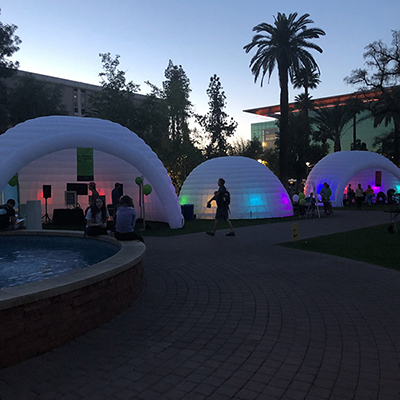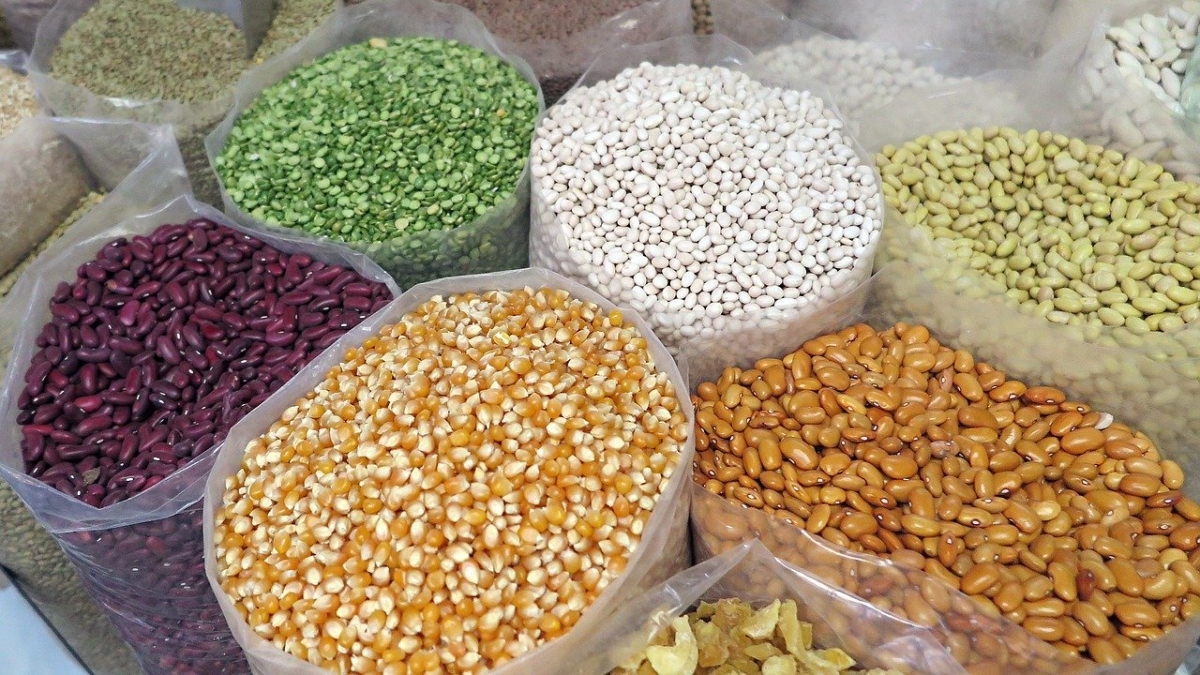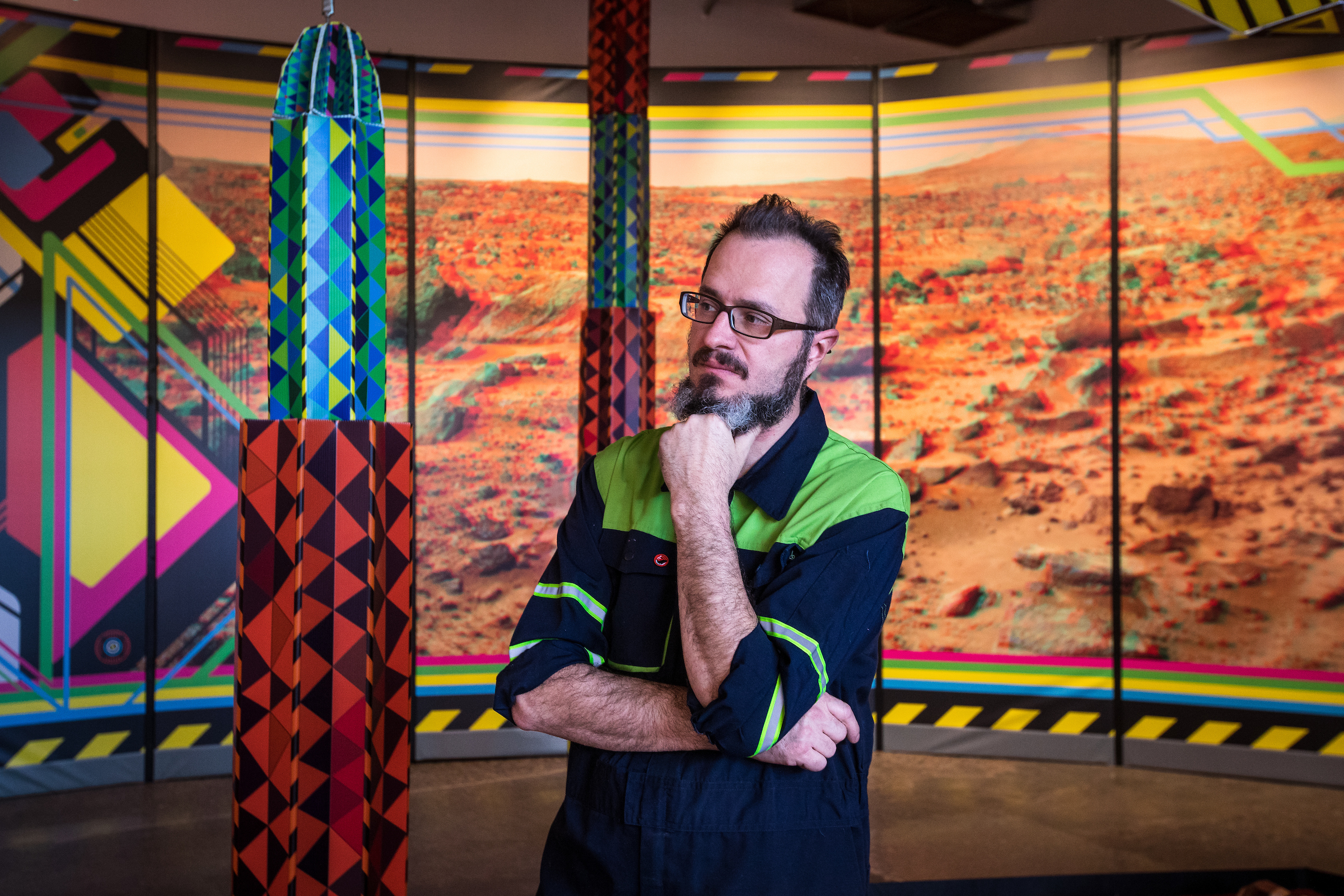Editor's Note: In light of the current public health emergency, the March 21 Emerge 2020 event has been postponed until further notice. A new date and time has not been set, but we will keep you updated as we learn more. If you have any questions, please contact emerge@asu.edu
Can you eat with your ears? And how do we create food security for plants?
The Arizona State University community will explore those questions and other mind-bending scenarios at Emerge 2020: Eating at the Edges. The 10th annual Emerge event will be an immersive experience that will transform the Mesa Arts Center from 4 to 10 p.m. Saturday, March 21. The event is free and open to the public, and it will include hands-on activities, performances, workshops, exhibits, experiments and interactive experiences. Some of the experiences request pre-registration.
Christy Spackman, an assistant professor in the School for the Future of Innovation in Society, is the lead directorThe other directors are Ed Finn, founding director of the Center for Science and the Imagination and associate professor with a joint appointment in the School of Arts, Media and Engineering and the Department of English; Jake Pinholster, associate dean for enterprise design and operations in the Herberger Institute for Design and the Arts; Cynthia Selin, associate professor in the School for the Future of Innovation in Society and the School of Sustainability; and Ruth Wylie, assistant director of the Center for Science and the Imagination and an assistant research professor in the Mary Lou Fulton Teachers College. for the event. Her research is at the intersection of art and science, and she studies food and sensation.
“We are excited as a team to explore what the future of food might be but also to explore it in a way that’s a little more inclusive, thinking about not just human eating but who gets to eat and how they get to eat, especially as we face all these conversations about environmental extremes and extinctions,” she said.
“We’re trying invite people to think with us about what it means to eat. Is eating just eating, or is it also absorption?”
Emerge 2020 will include around 20 experiences, including one called “Shared Food, Shared Land” that will feature indigenous food makers. Participants will help prepare a meal and engage in discussion about the food’s origins and health benefits, and how people relate to it. The workshop, which will be held several times throughout the day, will end with an optional tasting.
The event is drawing local as well as international artists. Phoenix sculptor Roy Wasson Valle will show his “Mars Made: Retroforms Cactus Gardens Experience,” a large-scale installation that was his thesis project for the master's of fine arts degree he earned last semester. Wasson Valle worked with the Interplanetary Initiative at ASU, an interdisciplinary mission to create practical methods for humans to live and work in space. The resulting work is a speculative vision of what a human work site on Mars would look like in the 23rd century, complete with representations of a cactus garden.
Sculptor Roy Wasson Valle created a vision of what colonized Mars will look like in the year 2268 for his graduate thesis. The work will be featured in Emerge 2020: Eating at the Edges at the Mesa Arts Center on March 21. Photo by Charlie Leight/ASU Now
The annual Emerge festival is a hands-on experience of imagining the future, drawing on the expertise and creativity of the ASU community and beyond. Emerge 2020 is a collaboration of ASU’s School for the Future of Innovation in Society, the Center for Science and the Imagination and the Herberger Institute for Design and the Arts at ASU, as well as Mesa Arts Center and Leonardo/International Society for Arts, Sciences and Technology.
“Emerge 2020 is an opportunity to bring all of your senses to the space and to get your hands in things, sniff things and put things in your mouth,” Spackman said.
“Kitchen/Lab” is a mobile performance and workshop space created by Liz Flyntz, a writer and artist based in Baltimore, and bio-artist Byron Rich, who teaches at Allegheny College in Pennsylvania. The “Kitchen/Lab” experience will examine the intersections of food systems and cultural ideology and will investigate how food affects notions of gender.
“We have a theme of stories that’s running throughout,” Spackman said. “There’s a reading circle in which the stories will get progressively more challenging over the performance period, starting with ‘If You Give a Mouse a Cookie,’ and the final performance is a Filipinx drag horror comedy cooking show. Artist Patrick Salvani is playing with the origin story of a vampire in the context of being an immigrant in a space where you’re not always welcome.”
Spackman said that experience, called “Sarap,” has a message that’s relevant now in Arizona.
“We’re at the forefront of border conversations in the United States, and we can use food as a way to think deeply about what’s going on in Arizona, in the U.S. and even in Mexico as they look at their border with Guatemala,” she said.

Emerge 2020 will include the glowing domes that were used at last year's event. Photo by ASU
Emerge 2020 will be held outdoors on the Shadow Walk at the Mesa Arts Center and will include the glowing domes that were used at last year’s Emerge. Keeping with the food theme, visitors will get a “menu” listing of the installations when they arrive, and they can choose from among “appetizers” or the more immersive “entrees.” While some of the experiences will include food, the event also will include six food trucks, featuring graduates of ASU’s Prepped program, and a musical performance at 8 p.m. that will ask participants to “eat with their ears.”
Several activities will cater to children. “ArtKitchenFerment” will feature interactive demonstrations of cabbage-dye art and kombucha “leather” jewelry. At “The Great Sunflower Project,” presented by ASU staff and faculty, kids can get free sunflower seeds and learn how they can help with real research about hummingbirds, bats and bees.
Spackman hopes families will attend together.
“One of the things I find striking about Emerge in general is the way it allows multiple generations to come together and experience things and open up a conversation,” she said.
“Within a family, a grandchild and grandparent can say, ‘What do we want the future to look like?’ The idea of multigenerational conversations is what Emerge does differently.”
Top image courtesy of Pixabay
More Science and technology

Pioneering professor of cultural evolution pens essays for leading academic journals
When Robert Boyd wrote his 1985 book “Culture and the Evolutionary Process,” cultural evolution was not considered a true scientific topic. But over the past half-century, human culture and cultural…

Lucy's lasting legacy: Donald Johanson reflects on the discovery of a lifetime
Fifty years ago, in the dusty hills of Hadar, Ethiopia, a young paleoanthropologist, Donald Johanson, discovered what would become one of the most famous fossil skeletons of our lifetime — the 3.2…

ASU and Deca Technologies selected to lead $100M SHIELD USA project to strengthen U.S. semiconductor packaging capabilities
The National Institute of Standards and Technology — part of the U.S. Department of Commerce — announced today that it plans to award as much as $100 million to Arizona State University and Deca…

